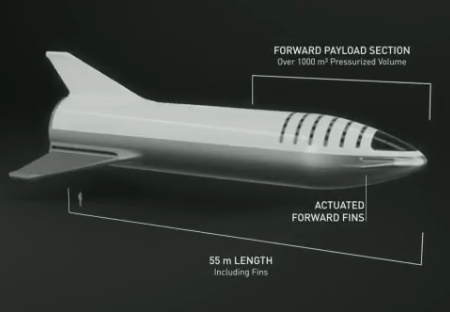SpaceX will not use Falcon 9 for BFR tests
In a series of tweets, Elon Musk revealed yesterday that SpaceX has decided it will no longer use its Falcon 9 to test Big Falcon Rocket (BFR) designs and has instead redesigned the BFR’s upper stage, dubbed the Big Falcon Spaceship (BFS), and will do those tests with that.
I suspect that the company got pushback from NASA and the Air Force about making any big changes to the Falcon 9 upper stage, and decided it was better to leave well enough alone. They have more flexibility making these changes and tests with BFS.
However, the main conclusion that I draw from writing up this post is that SpaceX has got to come up with better names for BFR and BFS. What they have now is boring and unwieldy. I am sure that Musk can think of two more exciting and easier to use names for the new rocket’s reusable first and second stages. And he should do it, now!
In a series of tweets, Elon Musk revealed yesterday that SpaceX has decided it will no longer use its Falcon 9 to test Big Falcon Rocket (BFR) designs and has instead redesigned the BFR’s upper stage, dubbed the Big Falcon Spaceship (BFS), and will do those tests with that.
I suspect that the company got pushback from NASA and the Air Force about making any big changes to the Falcon 9 upper stage, and decided it was better to leave well enough alone. They have more flexibility making these changes and tests with BFS.
However, the main conclusion that I draw from writing up this post is that SpaceX has got to come up with better names for BFR and BFS. What they have now is boring and unwieldy. I am sure that Musk can think of two more exciting and easier to use names for the new rocket’s reusable first and second stages. And he should do it, now!


